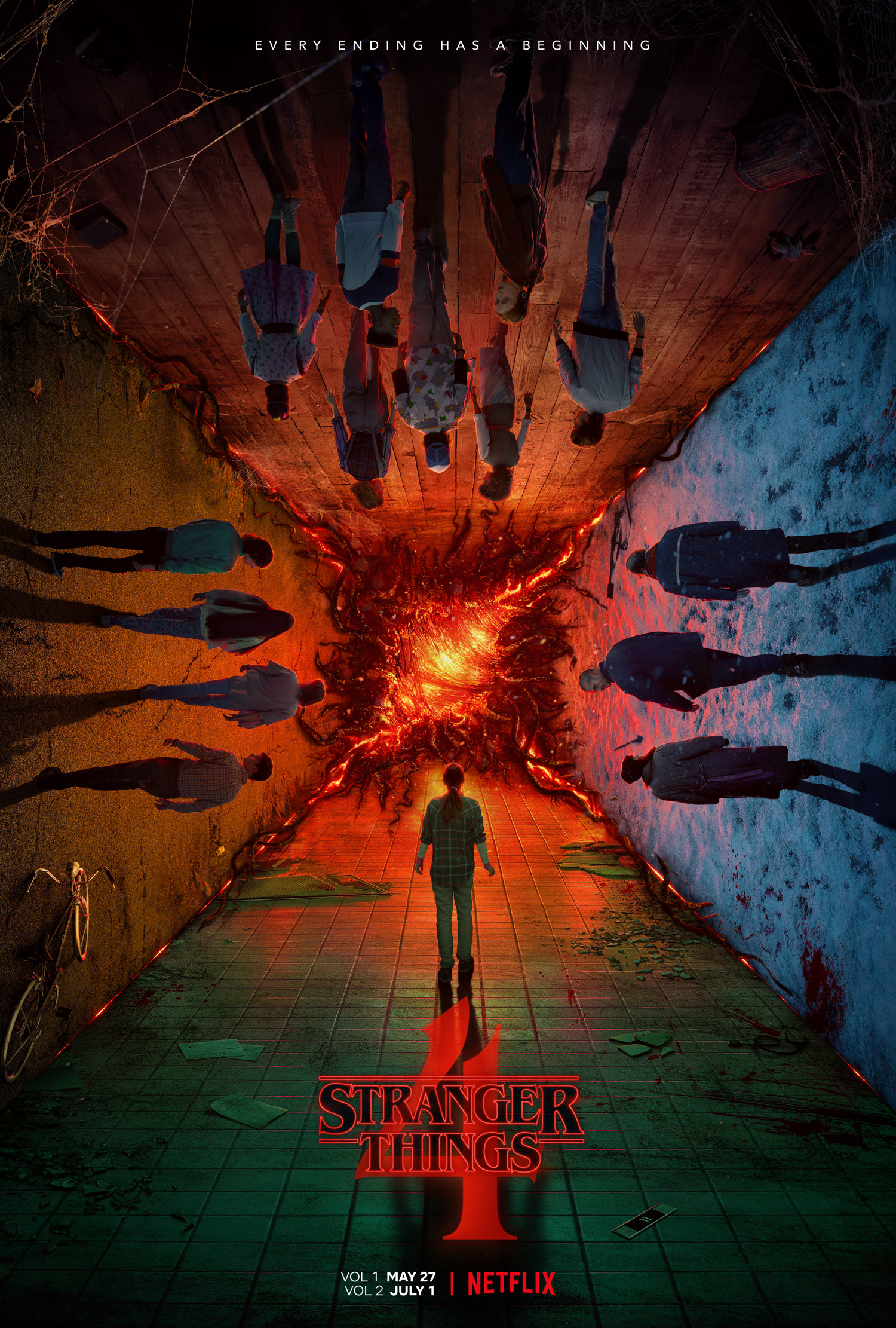By Ruby Schwalm
“Stranger Things 4″ was the summer TV series hit of 2022. It was heavily awaited by fans when it was released on May 27. The popular Netflix show has come a long way since its debut in 2016.
The series is full of action, adventure, and ’80s replication. Yet, season four somehow surpassed the previous seasons within those concepts. The historical accuracy is profound and they zero in on trauma.
Located within a small Indiana town, Hawkins is home to an interdimensional world referred to as the “Upside Down”. This world has brought trouble into the lives of four preteen-turned-teen friends. Plus, having a telepathic friend with a number for a name (Eleven/El) does not help fix the constant chaos of the small-knit community.
In this most recent season, the group of friends is split up across the country as spring break hits. Vecna, the interdimensional supervillain, is the source of the open gates to the Upside Down and the killings of three Hawkins High School students. Somehow, each group’s battle was connected back to Vecna.
Although, adventure and extra gore isn’t the only thing prevalent in season four. I believe “Stranger Things 4” offers real historical ‘80s replication and a focus on the effects of trauma.
“Stranger Things 4” replicated some of the societal beliefs of the ‘80s. This included a reluctant attitude toward video games and gaming.
Within the first episode of the season, before danger occurs in Hawkins, we see Mike and Dustin hanging out with their Dungeons & Dragons club, Hellfire. When in need of a substitute player, Mike and Dustin run around the school asking people from each clique to join their club for the night to play their campaign.
During their wild goose chase, Mike goes into the science lab to ask a student to be a sub for them. This student replied to Mike and said how Dungeons & Dragons is a satanic game according to “60 Minutes”.
At this point in time, video games and other fantasy games were looked at as a dangerous playing field. With it still being a new aspect of play, society was apprehensive about the concept of gaming. Due to the influence that people thought games had, games like D & D led citizens of the ‘80s to believe they were destructive. For being a show made in the 21st century, “Stranger Things 4” replicated this scare perfectly. Especially with the mention of the highly trusted news source, “60 Minutes”.
Other than ’80s replication throughout the whole series, “Stranger Things 4” touched on a more serious topic.
Taking form as a metaphor, each person Vecna targeted and killed was going through or had unresolved trauma. He preyed on their weak and hopeless mind because of their vulnerability.
When Chrissy was haunted by Vecna, he invaded her mind and created fake scenarios revolving around her eating disorder caused by her mother’s verbal abuse. Next, when Fred was haunted by Vecna, he brought the fatal car crash from his past back to reality because he felt guilty. Later on, when Patrick was haunted by Vecna, he was surrounded by the disapproval of his father. Lastly, when Max was haunted by Vecna, he made her guilt of Billy’s death take over her mind.
Vecna feasted upon their trauma and made them a part of his game. I feel as though this served as a metaphor for how unresolved issues and lack of healing can affect people in many ways. It shows how their demons continued to attack them, even when it’s “left in the past”.
Compared to other seasons, “Stranger Things 4” included more serious topics and real-life historical events.
Each season has its own battles, but this season included battles between things other than El and an interdimensional being. Seasons one through three felt like puzzle pieces that were waiting to form a proper picture. Season four was the last piece that connect the series together. It truly encapsulated the essence of the ‘80, the action themes prevalent throughout the storyline, and the mature topics that come along with teens.
Even though it was a crucial and important addition to the series, there was one main concept I did not favor. As previously said, the characters were split up across the country, some even across the globe, throughout the season. I did not like the fact that they didn’t interact with each other until the final episode.
Usually, there will be characters that are close in each season and have adventures on their own, but this season had too much division between the core characters. Although it was fun to watch so many storylines happening a once, I would have loved to see everyone together earlier in the season.
All in all, “Stranger Things 4” was the perfect addition to the series.
I love the way it was made with great effort. I feel as though it held viewers’ attention the whole time.
There was never a dull moment where I felt lost or bored watching it. If you have yet to watch season four or the whole series, I recommend including it in your cycle of Netflix shows. The plot mixes together reality and fantasy which creates a limitless travel back in time.
As a fan of the series, as are many others, I’m excited to see what’s in store for “Stranger Things 5” and the group of kids from Hawkins, Indiana.
